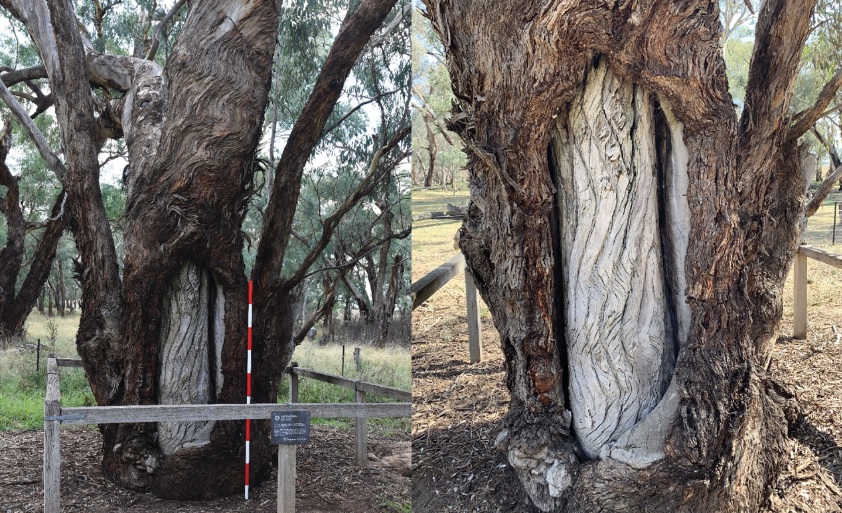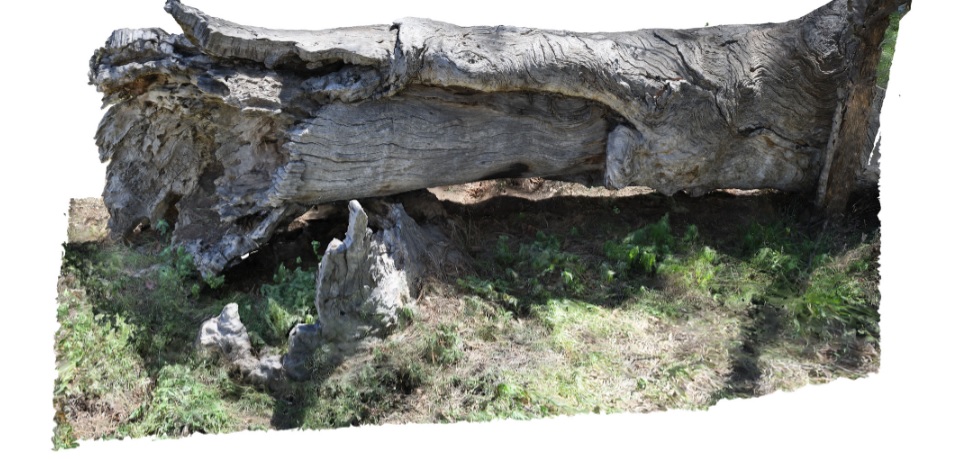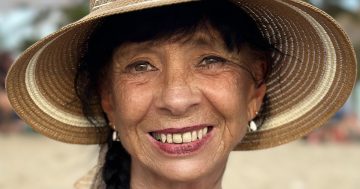
Photographs of the carved tree and details of the carvings from the first study. Images: La Trobe University.
In a landmark collaboration between Wiradjuri people, the NSW Government and archaeologists, new research using cutting-edge technology has revealed the hidden story of Wiradjuri carved trees (‘marara‘), unique tree carvings (‘muyalaang’) and burials (‘dhabuganha’).
The Wiradjuri people occupied a large part of the central, southern and Riverina regions of NSW.
Their lands stretched from the Murray River near Albury upstream towards Tumbarumba, progressing north along the edges of the Great Dividing Range, past Tumut and Gundagai to Lithgow before continuing up to Dubbo and west across plains to Nyngan before extending south to Booligal swamps near Hay and across the Riverina plains, through Jerilderie and back down to Albury.
Today major Wiradjuri groups still live in Condobolin, Peak Hill, Narrandera and Griffith, with significant populations also at Wagga Wagga and Leeton and smaller groups at West Wyalong, Parkes, Dubbo, Forbes, Cootamundra, Darlington Point, Cowra and Young.
The Wiradjuri-led project involved teams from Central Tablelands Local Land Services (LLS), Gaanha-bula Action Group, Orange Local Aboriginal Land Council, Yarrawula Ngullubul Men’s Corporation, La Trobe University and the University of Denver in the USA.
It brought together traditional cultural knowledge and cutting-edge archaeological techniques of ground-penetrating radar (GPR) and 3D modelling, to shed light on two sacred locations in the state’s Central West.
Today, only a small number of marara remain, and most dhabuganha are no longer visible due to erosion and modern land-use practices.
By using the GPR at one location near Molong, the teams were able to non-invasively analyse and map changes in soil to refine the understanding of the resting place of a Wiradjuri man of high standing.
A fallen scarred tree on the other side of the creek denoted the spot where the man’s ‘wife’ was reportedly buried. The scarred tree was relatively intact, suggesting it was still standing when the woman was buried, and only fell more recently.
The second study area, also near Molong, was at the site of Yuranigh’s Grave – the final resting place of Yuranigh, a Wiradjuri man who guided surveyor Sir Thomas Mitchell during expeditions into different parts of Australia in the early to mid-19th century.
Here they were able to study carvings in the trees surrounding the burial site; carvings now mostly hidden by scar regrowth.
In all, 17 3D models of culturally modified trees and dhabuganha were produced in the two study areas, providing a digital record of Aboriginal cultural heritage and a continuing educational resource for the Wiradjuri and broader community.
The research published in Australian Archaeology also uncovered a new understanding of the locations of marara and dhabuganha, providing the Wiradjuri people with a physical link to their ancestors and culture and ensuring long-term protection and management of these locations.
It also assisted with the repatriation and reburial of ancestors removed from these locations and others without consent.

Still image of 3D model of the woman’s fallen scarred tree. Image: La Trobe University.
Central Tablelands Local Land Services Aboriginal communities officer Greg Ingram welcomed the discovery.
“This has been an exciting opportunity and partnership for an Aboriginal-led science project with the Wiradjuri elders directing western science to support their existing cultural knowledge of the landscape and funeral practices where the cultural indicators were not obvious due to patterns of land management since colonisation,” Mr Ingram said.
Wiradjuri elder, Uncle Neil Ingram said the Wiradjuri philosophy of ‘Yindyamarra’ (cultural respect) had been an important part of this project.
“We were able to share our knowledge together on Country, and that was very respectful and important,” he said.
“It was a good demonstration that Western methodology, and traditional methodology and culture, and values, and land, and connection to Country can go together.”
Lead La Trobe University researcher, Dr Caroline Spry, said by incorporating traditional cultural knowledge into the western scientific research, it fostered a deeper understanding of marara and dhabuganha.
“Wiradjuri marara are enigmatic and unique in Australia and worldwide, but many are also nearing the end of their natural life cycle. When you Google these trees, you will only find information written by non-Wiradjuri people that doesn’t paint an accurate picture of what they represent,” Dr Spry said.
She said the project had built new understandings of marara and dhabuganha, where the teams were able to refine their understanding of where these burials are located, but also bring to the forefront the symbolism or cultural meaning of these sacred locations and their place in the bigger cultural landscape.
“Our research reveals a hidden history of Australia and encourages people to reconsider their own views of these trees in relation to Wiradjuri perspectives,” she said.
“For Wiradjuri people they are sacred locations that tell a story about Wiradjuri lore, beliefs, traditional cultural practices and Country, and pathways between the earth and sky world,” said Dr Spry.
She said there were plans to expand the research, in consultation with the Wiradjuri community, to consider Aboriginal culturally modified trees in the Central Tablelands area more broadly.
“These plans are still in the works, but we look forward to continuing our research with the Central Tablelands Local Land Services and Wiradjuri community to explore these opportunities together,” she said.
Original Article published by Edwina Mason on About Regional.








